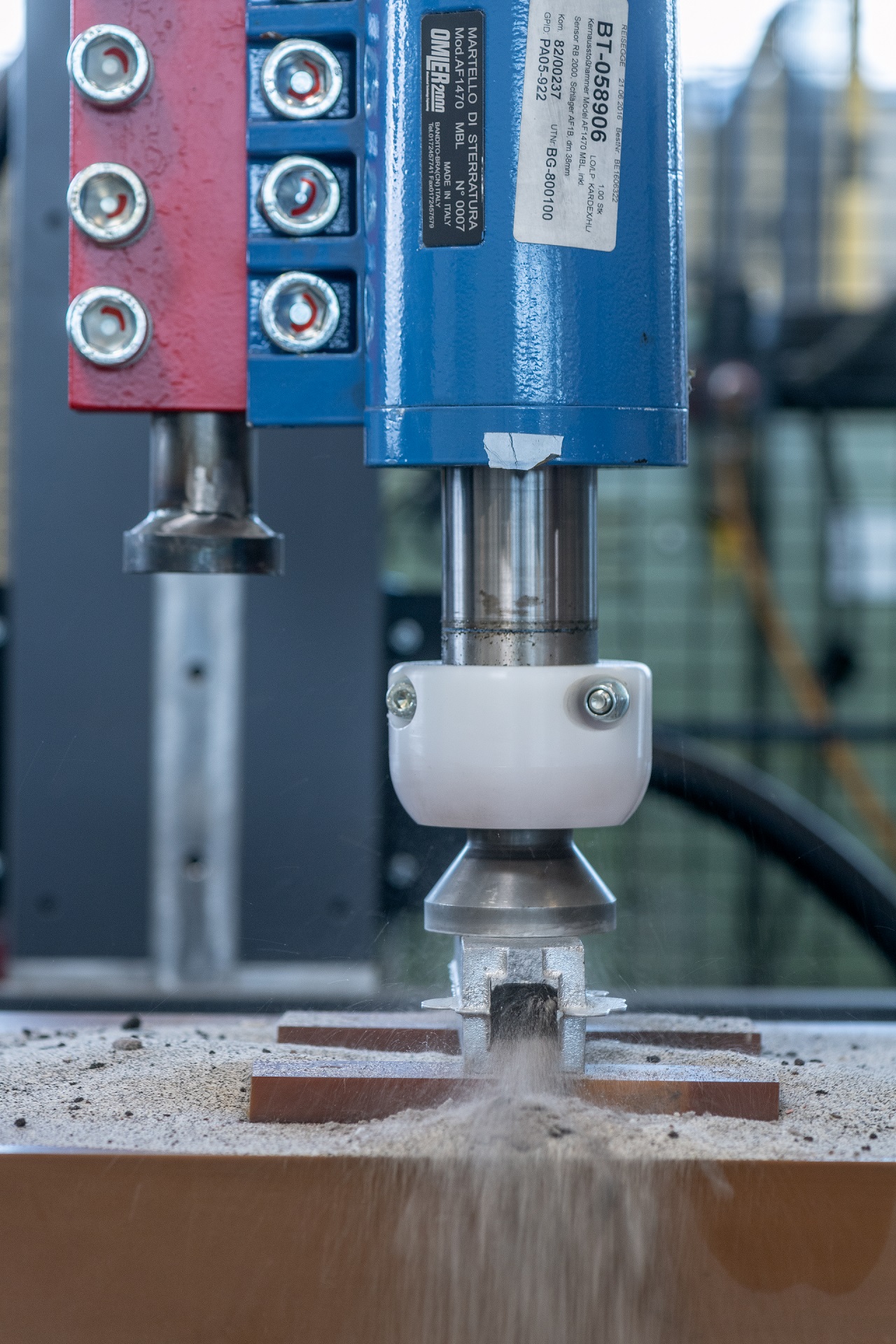The shaping for metallic castings is determined by molds and cores made of bonded sand. Cores are used to be able to create internal structures such as integrated pipes in castings. After casting, the sand cores must be removed from the casting without leaving any residue. A two-stage process typically carries out this coring. First, targeted hammer blows to the light metal component are used to create fractures in the core, and these fractures are then removed from the component with the aid of a vibrating system. The design of the coring process has been based purely on experience due to a lack of forecasting possibilities.
In close cooperation with FILL GmbH from Gurten (Austria), we could model the process virtually for the first time and describe it exactly. With the phenomenological material model developed at our company, it is now possible to predict the formation and expression of the core fracture in a virtual test laboratory.
The simulation model includes position, intensity, number, and frequency of hammer blows. Thanks to a user-friendly graphical interface, it is possible to ensure the basic coring capability for filigree internal structures as early as the component design stage and design the coring process and optimize it in terms of efficiency.
